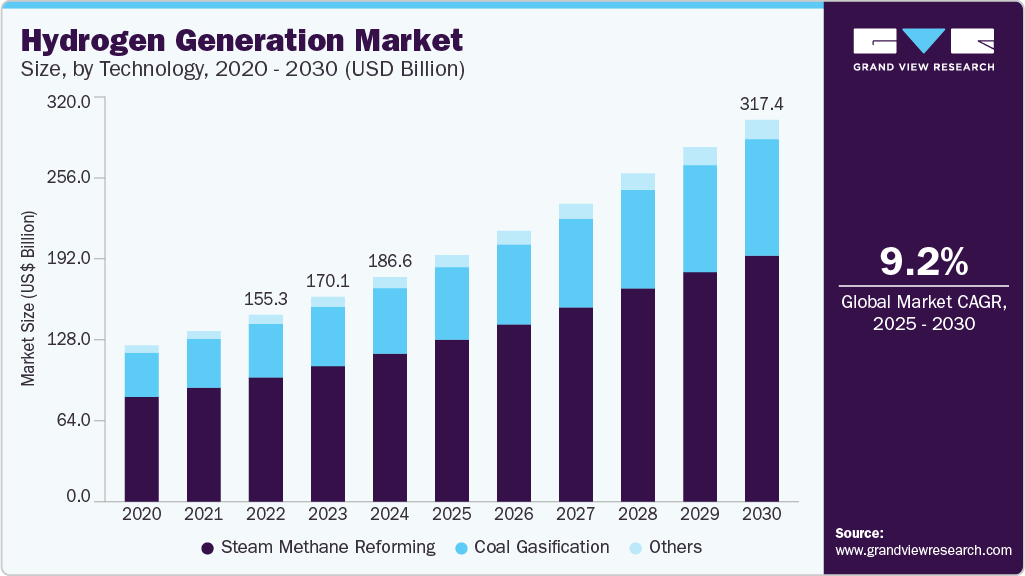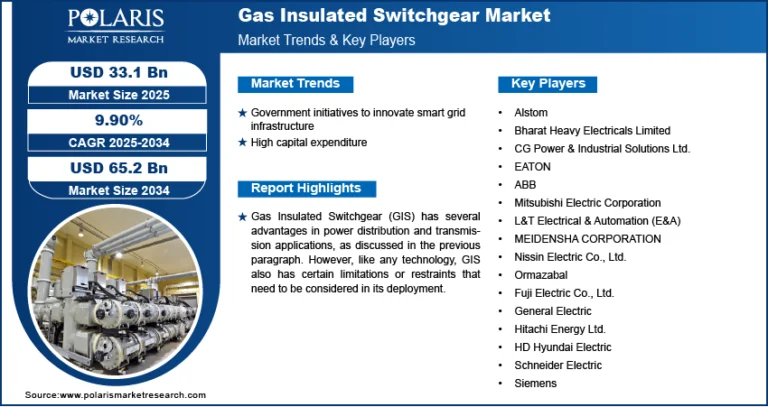Hydrogen Generation Market Size, Share & Trends Analysis grow at a CAGR of 9.2% from 2025 to 2030

The global hydrogen generation market size was estimated at USD 186.58 billion in 2024 and is projected to grow at a CAGR of 9.2% from 2025 to 2030. Growth is anticipated to be driven by demand for cleaner fuel and increasing governmental regulations for desulphurization of petroleum products.
Key Highlights:
- Asia pacific hydrogen generation industry dominated globally in 2024 and accounted for the largest revenue share of over 35.34%.
- The hydrogen generation market in the U.S. is anticipated to grow over the forecast period.
- By systems, the captive generation segment accounted for a notable revenue share of about 64.47% in 2024.
- By application, the ammonia production segment led the market with the largest revenue share of above 23.56% in 2024.
- By technology, the global market has been further divided into steam methane reforming, coal gasification, and others.
Request a free sample copy or view report summary: https://www.grandviewresearch.com/industry-analysis/hydrogen-generation-market/request/rs1
Growth is anticipated to be driven by demand for cleaner fuel and increasing governmental regulations for desulphurization of petroleum products. Hydrogen is an effective energy carrier, and this attribute is expected to contribute significantly to its further penetration into newer markets. Global electricity demand is expected to witness an increase of nearly two-thirds of its current demand over the forecast period.
Focus on projects related to distributed power & utility is anticipated to bolster industry’s growth over the forecast period.
The U.S. is among the early adopters of clean energy solutions in world for sectors such as power generation, manufacturing, and transportation. The U.S. Department of Energy (DOE) and Department of Transportation (DOT) introduced a Hydrogen Posture Plan in December 2006. The aim of this plan was to enhance R&D and validate technologies that can be employed for setting up hydrogen infrastructure.
Moreover, this plan provided deliverables that were set by the Federal government to support development of hydrogen infrastructure in the country. The plan was developed in accordance with National Hydrogen Energy Vision and Roadmap. Development and construction of cost-effective and energy-saving hydrogen stations across the country are among key objectives planned by government agency. All these factors are expected to propel demand for hydrogen generation in the U.S.
German Ministry of Transport took an initiative in June 2012 to establish a countrywide hydrogen network and boost hydrogen infrastructure for hydrogen refueling stations. As part of this initiative, Ministry signed a letter of intent (LoI) with industry players such as Total, The Linde Group, Air Products and Chemicals, Inc., Daimler AG, and Air Liquide, under terms of which these industry players were given a target to construct at least 50 hydrogen fueling stations by 2015 in metropolitan cities and major corridors in Germany.





